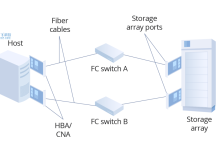服务器防止攻击
服务器作为一个信息存储和传输的平台,一直以来都是攻击者的目标。攻击者利用各种手段进行攻击,并造成服务器数据泄露、系统崩溃等严重后果。为了保护服务器安全,防止服务器被攻击,需要采取一些措施来加强安全。
常见的攻击方式
攻击者有许多方式来对服务器进行攻击,以下为常见的攻击方式:
DDoS攻击:利用大量流量、链接或者请求来使服务宕机。
SQL注入攻击:在请求中注入恶意SQL代码来获取数据或破坏系统。
XSS攻击:在网站中插入恶意代码,当用户访问该页面时,脚本会在用户浏览器中执行,从而攻击用户。
远程执行代码攻击:攻击者可以发送一个包含可恶意代码的请求到服务器,服务器会执行该代码,从而破坏系统或获取数据。
以上攻击方式只是常见的一部分,攻击者会使用更加隐蔽的方式来攻击服务器。因此,在服务器防御方面需要采取一些措施以消除安全隐患。
服务器防御措施
为了保障服务器安全,需要采取以下各种措施:
安装防火墙:防火墙可以监控服务器网络访问并阻止未经许可的流量。
更新系统和软件:定期更新系统和软件,确保服务器始终具有最新的安全补丁。
加强访问控制:使用安全认证技术,确定访问服务器的用户身份,并限制访问权限。
备份数据:定期备份数据以防止数据丢失或泄露。
限制文件上传:限制用户上传文件的类型和大小,以避免上传恶意文件。
使用SSL证书:使用SSL证书加密服务器和浏览器之间的通信,确保通信安全。
这些措施可以在服务器上降低安全风险,保护服务器免受攻击。
总结
服务器是网络安全中最重要的设备之一,攻击者不断试图对其进行攻击。为了保证服务器的安全,采取合适的防御措施是必要的。使用防火墙、备份数据以及限制文件上传等措施可以有效地降低安全风险。在进行服务器维护时,必须非常小心以确保安全。
Protecting Your Servers from Attacks
As an information storage and tran**ission platform, servers have always been a target for attackers. Attackers use various means to attack and cause serious consequences such as server data leaks and system crashes. In order to protect the server’s security and prevent attacks, some measures need to be taken to enhance security.
Common Attack Methods
Attackers have many ways to attack servers, and the following are common attack methods:
DDoS attack: Use a large amount of traffic, links or requests to make the service crash.
SQL injection attack: Inject malicious SQL code in the request to access data or damage the system.
XSS attack: Insert malicious code into a website. When a user visits the site, the script will execute in the user’s browser, thereby attacking the user.
Remote code execution attack: Attackers can send a request containing malicious code to the server, and the server executes the code, thereby damaging the system or accessing data.
The above attack methods are only a **all part of the common ones. Attackers will use more hidden ways to attack servers. Therefore, some measures need to be taken to eliminate security risks in the defense of servers.
Server Defense Measures
To ensure the security of servers, the following measures need to be taken:
Install a firewall: The firewall can monitor server network access and block unauthorized traffic.
Update the system and software: Regularly update the system and software to ensure that the server always has the latest security patch.
Strengthen access control: Use security authentication technology to determine the user identity accessing the server and restrict access permissions.
Backup data: Regularly back up the data to prevent data loss or leakage.
Limit file uploads: Limit the file type and size of uploaded files by users to avoid uploading malicious files.
Use SSL certificates: Use SSL certificates to encrypt communication between the server and the browser to ensure communication security.
These measures can reduce security risks on the server and protect the server from attacks.
Conclusion
The server is one of the most important devices in network security, and attackers are constantly trying to attack it. In order to ensure the security of the server, taking appropriate defensive measures is necessary. Measures such as installing firewalls, backing up data, and limiting file uploads can effectively reduce security risks. During server maintenance, extreme caution must be taken to ensure security.
52

 国外主机测评 - 国外VPS,国外服务器,国外云服务器,测评及优惠码
国外主机测评 - 国外VPS,国外服务器,国外云服务器,测评及优惠码













